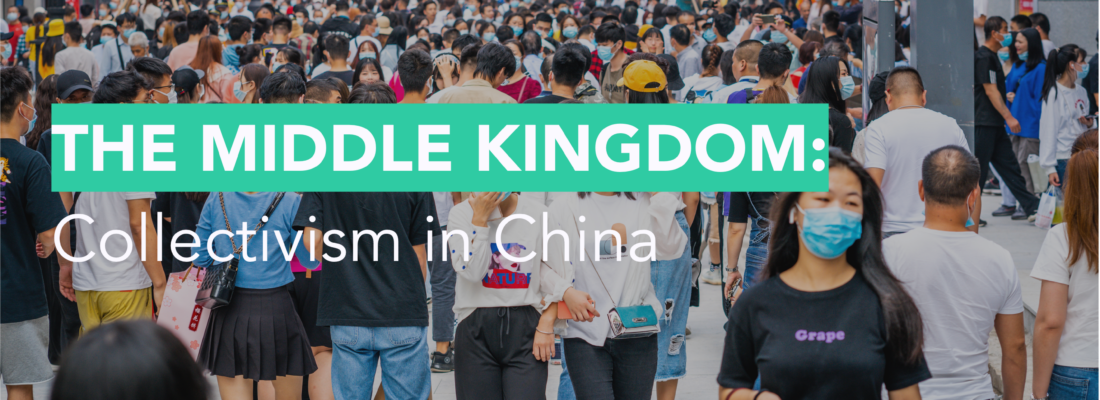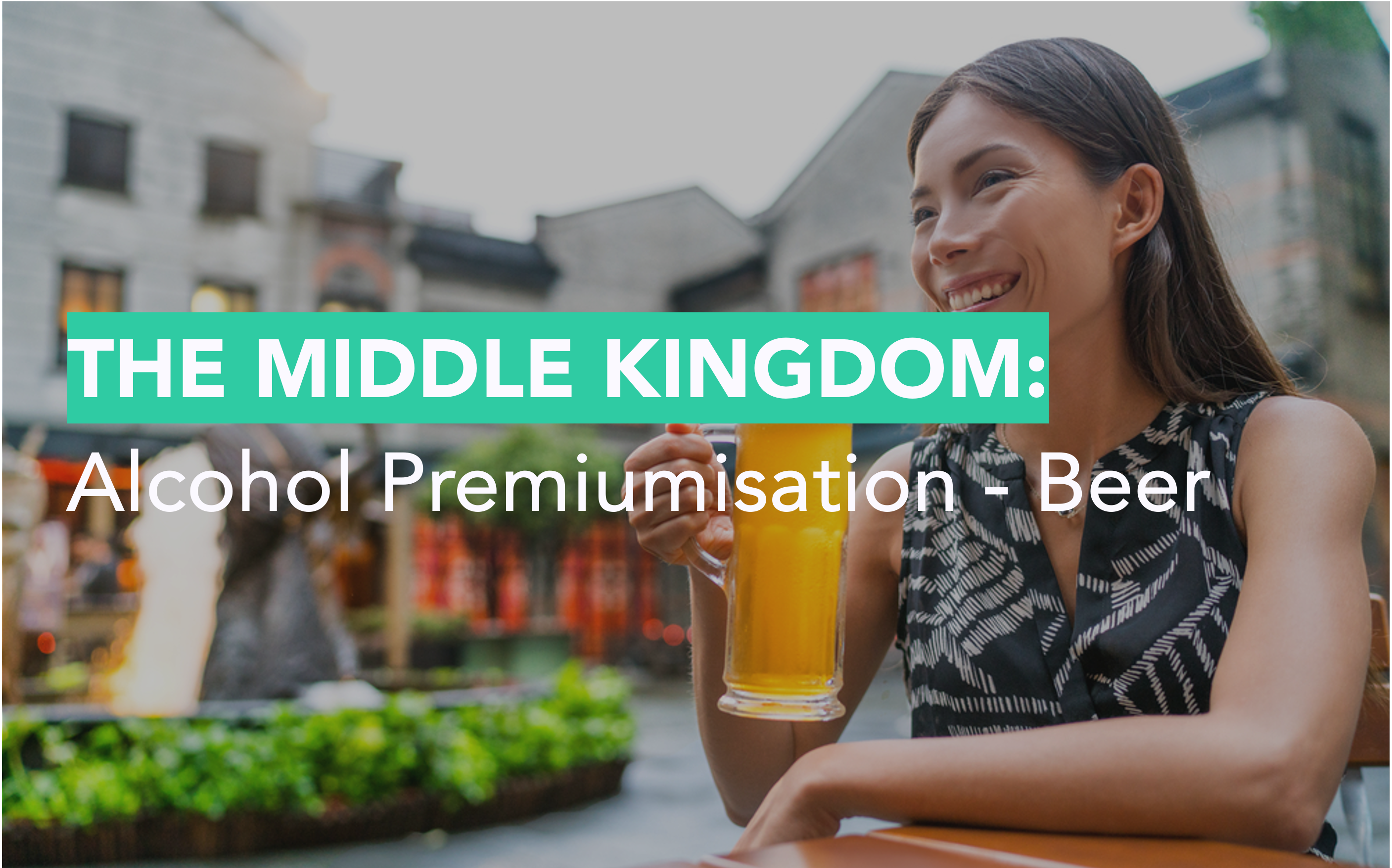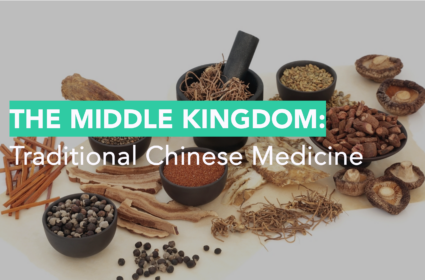The Middle Kingdom: Collectivism in China

This article is part of our series on The Middle Kingdom. You can view the full series or download the report.
Welcome to the Middle Kindom
The Chinese name of China is 中国 (pronounced ‘zhong guo’) which translates literally to ‘Middle Kingdom’. This dates back to ~1000BC when the Chinese were in relative isolation from the rest of the world, separated by the Himalayan mountains in the southwest, the Gobi Desert to the north and the Pacific Ocean to the east. As such, Chinese people assumed they were at the centre of the world, and aptly named their country the ‘Middle Kingdom.’ Our goal in this blog is to provide everyone with bite-sized insights into China’s Culture, Customs, and Consumers.
Understanding China: Collectivism vs Individualism
There may be a huge opportunity for international brands in China but investment in this competitive market doesn’t come without risk and a lack of cultural understanding is a surefire way to fail. With hundreds of competitors vying for a piece of the pie, the market is fast, and the consumers are quick to criticise so it’s essential to get familiar with the Chinese way of thinking and adapt your brand, products & comms to the Chinese audience.
One of the first steps to understanding Chinese consumers is understanding the collectivism that drives their behaviour. Contrary to the West, where society is focused on individual gain, modern Chinese culture has developed from Confucianism (among other philosophies) which places the gains of the group – be it family, society, or country – ahead of the individual. Through the lens of collectivism, we as individualistic Westerners can begin to rationalise the distinct culture and unfamiliar consumer behaviours we see in China.
How does collectivism in China translate into behaviour?
Family comes first:
The family is considered the most important ‘group’ in a Chinese person’s life. Emphasis is placed on family hierarchy – respect and obedience (known as filial piety) for your elders is of fundamental importance. In cities, several generations of family will often live together, with grandparents usually the primary caregivers to grandchildren while parents work full time. It’s not unusual for young Chinese adults to have closer relationships with their grandparents as a result. As grandparents and parents age, the responsibility of their care falls to their children.
To aid economic development, the Chinese government has continuously pushed the narrative of hard work and monetary success – a mentality that has been absorbed into family life. Children and young adults are often under enormous pressure from the high expectations of their families and wider society to succeed in life and bring prosperity to the collective. This has been exacerbated by the government’s previous one-child policy which has meant a family’s prospects rest solely on the shoulder of their only child.

Multi-generational families are more common in China than in the Western world
So what? The social set-up of the Chinese consumer is vastly different because of the importance of family. The interpersonal relationships between different family members are deep yet complex – particularly for younger people who are often battling between their personal ambitions and family values. Brands that can lean into the family dynamics and resolve some of those tensions will have a wide audience. Apple has released several successful ‘Shot on iPhone’ campaigns that have portrayed Chinese family life and culture. These are typically released around Chinese New Year – the largest national holiday in China and an occasion where extended families often reunite after being apart for the rest of the year. Check out the short films, Daughter from 2020, The Bucket from 2019 and Three Minutes from 2018 (based on a true story). Interestingly, all three address moral issues surrounding family life in China that have become popular topics of discussion online – gender roles, single motherhood, family expectations, and the common practice of family members looking after children while parents leave for work in bigger cities.
Saving face
Hierarchy and respect extend beyond the family into all aspects of society with the concept of saving, losing and preserving ‘face’. ‘Face’ is hard to translate but it can loosely be defined as reputation, prestige, or social standing. As described by academic Yvonne Chang “Deeply rooted in the Chinese concept of face are conceptualizations of a competent person in Chinese society: one who defines and puts self in relation to others and who cultivates morality so that his or her conduct will not lose others’ face.” Because of the importance of social standing within the collective, causing someone to ‘lose face’ by embarrassing or disrespecting them is the ultimate faux pas. While mistakes like this are readily forgiven in the West, China’s collectivist culture is more averse to criticism and therefore hypersensitive to any slights or perceived slights.
So what? The significance of ‘face’ in China has resulted in an extreme cancel culture for brands that bring on any loss of ‘face’ for the Chinese people. Well beyond a few negative tweets, Chinese netizens (internet users in China) can rally in their millions to call for boycotts and action against any offending brands.
You may have read about the Dolce & Gabbana ad scandal of 2019 from which the brand is still recovering, or the economic fallout for the NBA when Houston Rockets GM Daryl Morey published a tweet in support of the pro-democracy protesters in Hong Kong or the Xinjiang cotton scandal that saw several high-street brands such as Nike, Adidas, Zara & H&M temporarily withdrawn from China’s popular e-commerce site Taobao.

Adidas was one of the brands caught up in the Xinjiang cotton scandal
Whether or not you agree with the reasons behind this consumer behaviour, the reality is that brands must tread carefully to maintain social harmony. On the flip side, stifling creativity and squashing big bold campaigns to play it safe is definitely NOT how you will create deeper connections with your audience. It’s all about balance. How can you find ways to test your brand, products & concepts to ensure that they will resonate with your audience?
National Pride
As China has become an economic powerhouse, national pride has been on the rise. Gone are the days when Chinese consumers look to Western brands and businesses for guidance. In recent years, young Chinese consumers have been turning to homegrown brands embedded with local culture and style in a trend known as ‘guochao’ (literally translated to ‘national wave’). These local brands have been redefining what it means to be ‘made in China’ by leading the way in innovation and proving that Chinese brands and products are just as good, if not better, than international players. Chinese brands are also modernising traditional Chinese culture and consumers are naturally drawn in by the products that reflect their individual and collective identity. Examples of Chinese brands that have disrupted their category include sportswear brands Li Ning and Anta and C-beauty brands Florasis and Perfect Diary.

Two Gen-Zers dressed up in traditional Chinese clothing known as Hanfu, a popular expression of the ‘guochao’ trend.”
So what? International brands face stiff competition from local brands who obviously have the upper hand when it comes to cultural understanding but there is still opportunity for brands who want to leverage the ‘guochao’ trend. Brand collaborations and the limited edition or unusual products they offer are extremely popular in China and many international brands have begun working with local brands to connect with Chinese culture.
For example, L’Oréal collaborated with The Palace Museum of Beijing to create a limited edition of five lipsticks inspired by five different ‘beauties’ in Chinese history. Luxury fashion brand Coach also launched a series of accessories and clothes with White Rabbit, a famous sweet brand from Shanghai.

A model walks for Chinese athleisure/sportswear brand, Li Ning, at New York Fashion Week in 2019
Collaboration with local brands or creators presents ONE unique way to be a part of the Chinese collective culture. Not only does it give you access to a new audience, but local brands can also provide you with an in-depth cultural understanding of that audience, allowing you to participate in ‘guochao’ authentically and humbly.
China’s culture and consumers may seem like a minefield but by breaking it down and understanding the WHY behind their unique behaviours, we can begin to create deeper connections with our Chinese audience.




